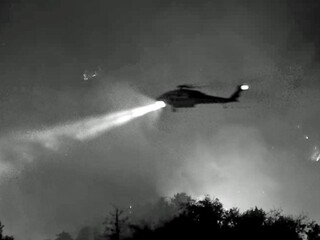Earth Science Stories | October 14, 2022
Sky High: NASA's carbon-measuring satellite highlighted in new documentary
For decades, scientists and engineers at NASA’s Jet Propulsion Laboratory (JPL) have wanted to measure how rapidly carbon dioxide (CO2) is increasing in Earth’s atmosphere, and in particular, to do that using satellites in space.
In the new documentary, “Sky High,” produced by JPL Fellow Blaine Baggett, you can see all the action. From the disappointment of a failed launch to the fanfare of a successful one, the documentary showcases the opportunity satellites offer to study our home planet.
A big idea like this required decades of work to come to fruition.
First, there was AIRS (Atmospheric Infrared Sounder), an instrument on NASA’s Aqua satellite that recently celebrated 20 years of probing Earth’s climate and continues returning data to this day.
AIRS paved the way for the first-ever global map of the distribution of CO2 around the world, as seen from Earth orbit. But as often happens with new science, the drumbeat was soon on for more.
AIRS is not sensitive to variations in CO2 near the Earth’s surface; instead, it gathers measurements from around 15,000 to 20,000 feet above sea level. For a satellite to help us pinpoint actual sources and sinks of CO2 right at ground level, a whole new satellite was needed.
Enter: the Orbiting Carbon Observatory (OCO) mission.
In the early 2000s, JPL convened this new science team to take the study of carbon dioxide from space up a notch.
Unfortunately, it was a difficult beginning. The documentary lays out the searing pain of the 2009 loss of first OCO mission during launch, and how it affected members of the OCO team.
Later, team members re-grouped and rallied to take care of “unfinished business,” as Ralph Basilio, OCO Deputy Project Manager put it, with the successful launch of OCO-2 in 2014. That was followed by the 2019 launch of sister instrument, OCO-3.
These satellites have turned conventional wisdom about Earth science on its head. For example, we think of tropical rainforests as clearing out vast quantities of CO2 from the atmosphere, functioning as the “lungs” of the planet. OCO-2 has shown that, unfortunately, this is no longer the case. The Amazon rainforest, for example, has suffered under so many years of drought plus extra heat that the trees have shut down. In other words, they have stopped photosynthesizing, the process by which they breathe in carbon dioxide and use energy from the sun to turn it into “food”. “They stopped even trying to grow,” says David Crisp, retired JPL scientist. “And because of that, [the trees] stopped absorbing carbon dioxide like they used to.”
The documentary also shows the insights that OCO-3, due to its special “point-and-shoot” camera, has provided on carbon emissions coming from large cities.
JPL scientist Annmarie Eldering, who you may recall from an earlier profile, is featured in the documentary as well, recounting in detail some of her OCO adventures, mishaps, and successes.
“Sky High” is the 16th documentary in the series, “JPL and the Space Age.”






